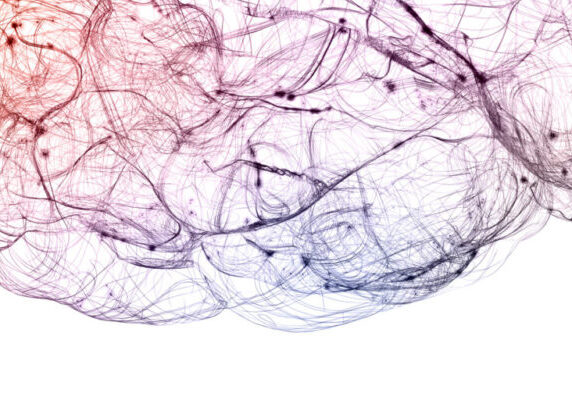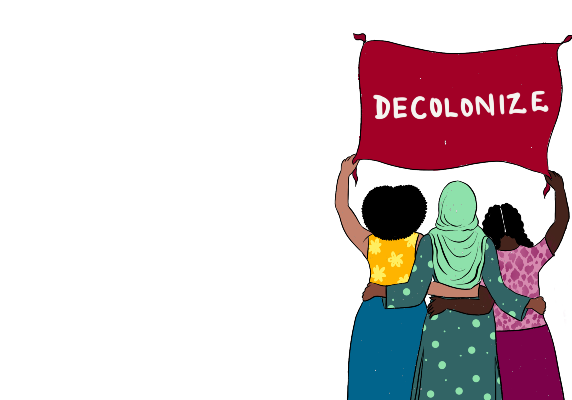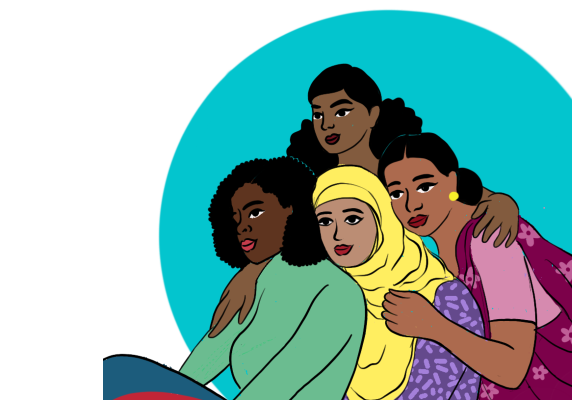Inclusive well-being for the entire workforce
Diversity, equity and inclusion (DE&I) policies and programmes are not new to the workplace.
But in response to Covid-19 and the Black Lives Matter (BLM) movement, many organisations are pushing themselves to reconsider the concept of DE&I.
Despite this, overall progress has been slow. What else can organisations do to look beyond DE&I as a one-dimensional blanket term and place it at the forefront of their approach to culture change?
For the third edition of Bond UK and Cigna Europe’s series of webinars, focussing on the well-being of NGO staff members, our guest speakers shared a wide range of perspectives exploring the link between DE&I and well-being. The webinar offered a unique opportunity for employers to gain insight into DE&I initiatives, as well as practical advice on how to increase the effectiveness of initiatives through enhanced well-being support for employees.
Here are some of the main takeaways.
Why is it so important to talk about wellness at work?
According to The World Health Organization (WHO), around 264 million people suffer from depression. Mental health issues have now been identified as a leading cause of disability in the workplace. WHO estimates that depression and anxiety disorders cost the global economy $1 trillion (US dollars) each year in lost productivity.
Subscribe to our newsletter
Our weekly email newsletter, Network News, is an indispensable weekly digest of the latest updates on funding, jobs, resources, news and learning opportunities in the international development sector.
Get Network NewsConversations around inclusive workplaces help us relate to each other’s individual experiences and promote diverse opinions that ultimately lead to better well-being for all.
In her opening remarks of the webinar, our first speaker, Dr Stellah Bosire, acknowledged that for those working in international development, the link between DE&I and well-being can be both palpable and traumatic. Dr Bosire drew on the refugee crisis in Afghanistan, and as an example, noted: “We’re responding to people who are being forced to move out of their countries because of their sexual orientation or their gender identity.”
It’s clear the impacts of systemic racism have drawn health and social inequities into sharper focus. Though many organisations are striving to make improvements to their employee health and well-being provision, Covid-19 has shown us in stark terms that racial and ethnic minority groups are at increased risk of getting sick and dying. As Dr Bosire remarked, racism has become a “public health issue“.
The need for inclusive leadership
Dr Bosire made the case that meaningful change across all aspects of DE&I will require inclusive leadership and a rethink of workplace policies, including financial resources for mental healthcare, in addition to health insurance.
However, traditional health and well-being initiatives often fail to accommodate our diverse and overlapping identities – such as race, socioeconomic status, gender, gender identity, sexual orientation, age, ability, religion, immigration status, and language. So how can organisations take into account our intersectional identities and embed inclusive practice?
For Aqsa Suleman, recognising that well-being representatives are often white, and therefore unable to relate to the experiences of people of colour, was one of the catalysts behind the launch of Race Equity at her organisation Mind, an inclusive well-being programme for employees of colour.
“Many standardised well-being packages don’t explicitly mention racism or racial-based stress or trauma. They don’t mention inter-generational trauma. How generations pass along this degree of mistrust to their children and grandchildren. The experience of feeling a lack of belonging. People of colour who share their experiences of racism in the wider workplace often feel invalidated. They often feel judged or that they are the problem.”
She urged organisations to recognise that “well-being is very fluid and what it represents changes on a day-to-day basis”, regardless of our intersectional identities. And if organisations are to succeed in protecting employees with sustainable DE&I practices, well-being systems need to be designed with this in mind.
Adapting to a changed workplace
Covid-19 has profoundly altered the workplace. While there has been a lot of focus on the negative consequences, the potential positives are often overlooked. For disabled people, after decades of being told that remote working is too difficult, the pandemic has shown that a lot of the reasonable adjustments to support disabled people in employment and to manage their well-being are possible.
However, as we move to remote or hybrid working arrangements, a lot of the inherent workplace structures that support well-being are now absent for many. The outcomes are likely to be particularly negative for disabled people, who are often more reliant on everyday touchpoints to support emotional well-being.
Zara Todd, a disability activist, presented the view that the pandemic has offered a massive opportunity to create a more inclusive workplace. She believes we’ve arrived at a point where so many of us are struggling we’ve been forced to reflect on how we work and what good well-being really means.
“A lot of well-being is focused on trying to achieve some form of perfection or normal, rather than acknowledging that we are all diverse human beings. Our normal might be that we have coping mechanisms to manage the conditions that we have on a day-to-day basis. Being “well” is living with who you are and what conditions or impairments you have, and having choice and control over how you manage that.”
This includes cultural differences, which are another important consideration when designing an inclusive well-being programme. Different cultures have different attitudes to mental health. In certain cultures, there is a stigma around mental health, sometimes to the extent that mental health issues are considered a sign of weakness and therefore something to hide.
“That actually makes things harder for those who are struggling to talk openly and ask for help,” explained Michelle Leung at the webinar, “because social status is often very important.”
It is crucial to consider who will deliver a well-being programme, but also who will design it and whether or not the proposed design will support cultural nuances as part of a long-term process. “It’s so important, in my view, that a wellness programme is sustainable,” she said. “It’s not a one-off programme that you run over one or two months and that’s it. You probably won’t see any positive impact for a year or two.”
Building your inclusive wellbeing programme
To drive change, a well-being programme relies on senior leadership buy-in, but needs to be owned, practised and demonstrated by everyone in the organisation. Although progress has been slow, we have still seen important gains across DE&I. It is now up to organisations to take bold steps to implement meaningful well-being programmes that fully leverage the benefits of a diverse workforce.
Mary Ann concluded the webinar by adding: “Where spaces can’t be equitable, they are in general unable to help people be well.”
Category
News & Views



